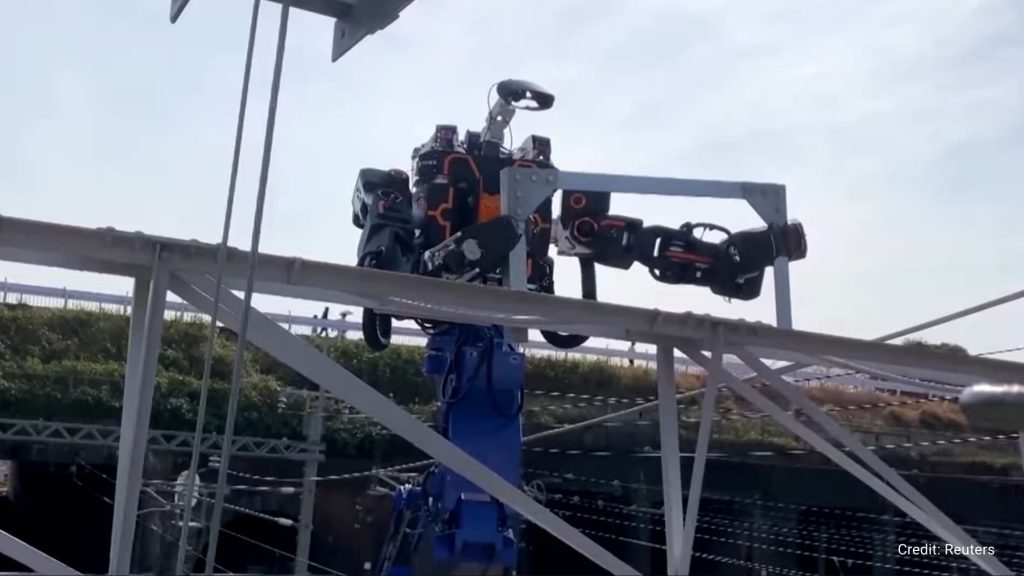
West Japan Railway now has a remote-controlled robot to garden and paint cages.
- As of this month, the 12-meter-high robot will help the maintenance crew,
- The machine is a Band-Aid to Japan’s worker shortage caused by the aging population.
West Japan Railway has hired a remote-controlled robot to maintain its train lines, protecting human life from potentially dangerous tasks.
Several companies and organizations in Japan have been looking into automation to reduce these risks, including West Japan Railway. The railway company has hired a 12-meter-high remote-controlled robot to replace human workers.
The Japanese humanoid robot is a peculiar-looking machine: Wall-E’s head, Optimus Prime’s torso with several attachments for the arms, and a snake tail attaching it to the truck. It can carry objects as heavy as 40 kg, hold a paintbrush, and use a chainsaw.

Its operator sits safely in the cockpit of the truck, which can drive on trails. He sees through the remote-controlled robot’s ‘eyes’—cameras—and then trims the trees along the tracks or paints the cages that house cables above the train.
In a statement, the company shared how this will help with the worker shortages caused by Japan’s aging population. “In the future, we hope to use machines for all kinds of maintenance operations of our infrastructure,” said Kazuaki Hasegawa, West Japan Railway president, in a recent press conference.
Starting this month, the machine will support train maintenance crews.
Tech to Support, Not to Replace
In the age of AI, there’s nothing outwardly remarkable about remote-controlled robot. However, it is an important example of how even low-tech machinery can help support the existing workers rather than replace them.
Rather than intelligently doing the tasks with AI and forgoing a human operator, West Japan Railway’s robot allows the worker to safely go about his tasks. And this approach could be applied to other fields as well, not just railway transportation. According to the U.S. Department of Labor’s “National Census of Fatal Occupational Injuries In 2022,” there were 5,486 recorded fatal work injuries in 2022. That was an increase of 5.7% from the year prior, which recorded 5,190 injuries. In 2022, construction and extraction workers had 1,056 fatalities, an 11% increase from 2021.
While these numbers are lower than they once were before all the technological advancements, it is very important to keep thriving for a safe work environment and help avoid the loss of human life.
Final Thoughts
West Japan Railway’s remote-controlled robot may not be a high-tech machine, but it’s advanced enough to offer workers an additional safety net. A machine does not need every bell and whistle to do a good job and keep its operator safe.
Inside Telecom provides you with an extensive list of content covering all aspects of the tech industry. Keep an eye on our Tech sections to stay informed and up-to-date with our daily articles.